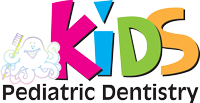When Should you Bring your Child to the Dentist?
There are two main scenarios that call for a visit at a certain time to a pediatric dentist. The first reason is because of the preventive and educative nature of oral health for your children and parents/ guardians. The second reason is under the unfortunate situation of an emergency. Let’s briefly explore both.
Perinatal Oral Care
The American Academy of Pediatric Dentistry (AAPD) recommends that all pregnant women obtain the proper counseling and oral health treatment during pregnancy. Periodontal disease in the pregnant mother has the risk of creating problems in the development of the fetus and can result in preterm birth and/or low birth weight. Poor oral health in the mother can also increase the possibility of passing cavity-creating bacteria to her child. Expecting mothers should follow their good oral habits such as:
-
- Visiting dentist
- Brushing and flossing daily
- Chew Xylitol gum in moderation
- Using fluoridated toothpaste and plaque-reducing mouth rinse
- Avoid transmitting bacteria via sharing food and utensils
- Watching diet to avoid high sugars/starch foods
- About the First Visit
The AAPD recommends a dental visit be scheduled when your child reaches six (6) months of age. Similarly, the American Dental Association (ADA) and the American Academy of Pediatrics (AAP) recommend the establishment of the so called “Dental Home” by the time your child reaches 1 year of age. Your child’s first visit becomes a major milestone, allowing your child to become comfortable with Dr. Lisi or Dr. Alina and much more willing and able to work towards preventive oral health care.
We need to ensure this first visit is exciting and a non-event to your child to avoid the traumatic experiences associated with ERs or other negative memories. The early visits are also very important for parents/ guardians, as they will learn and discuss with pediatric dentists at KPD the proper habits and any concerns they may have about their child. Setting these expectations and exchanges are very important during this first visit.
In the unfortunate case of an emergency, please always call 911 first and/or take your child to the Emergency Room (ER). Once you have taken one or both of these two steps, you can then call Dr. Lisi and explain the situation. It may be that during the visit to the ER, and depending on your child’s dental history, the ER physician may also require some information from our office, and/or have parents/ guardians follow up with pediatric dentists at KPD for further treatment. Please refer to the “Emergency” section further down for additional information on the common emergencies surrounding children, and certainly please call us if you have any question or concern..
Between the ages of 2 and 3 years old, pediatric dentists need to assess the bite relationship to determine the future malocclusion on the child’s bite. If needed the treatment period encompasses from 2-6 years of age (Stage I). Under this young age, we are concerned with underdeveloped dental archers, the premature loss of primary teeth, and harmful habits such as finger or thumb sucking. A treatment initiative in this stage of development is often very successful and many times, although not always, can decrease the time needed for orthodontic treatment.
When the child is between 6-7 years old, and with the eruption of the permanent incisors and 6-year molars, a full orthodontic treatment may be adequate (Stage II). At this age your child’s teeth and soft tissues are usually very responsive to orthodontic forces. When your child reaches adolescence (Stage III), it is important to monitor the permanent teeth and the development of the final bite relationship, to determine if further orthodontics work is required.
